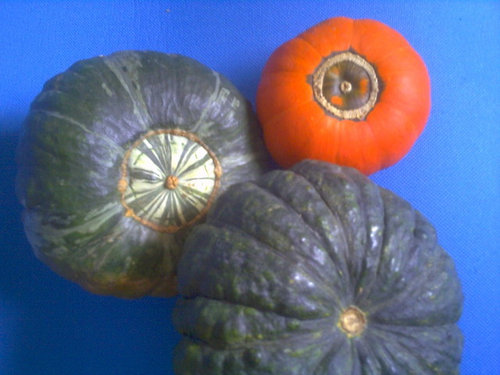New interspecific hybrid 'Mel Karn'
acorneti
9 years ago
Cucurbita maxima turbaniformis 'Red Melk' (picture right behind) x Cucurbita moschata 'Bueng Karn' from Thailand (picture right front) for the new C. maxima hybrid 'Mel Karn' (created in 2014 as you see left side).
F1 will be selected but also crossbred with the 4-lober giant 612 Ammer 14 ( a stretto bred 1385.5 Jutras 07). P-generation also is a 4-lober.
The aim is to create a larger C. maxima fruit with C. moschata flesh and with fusarium resistance from C. moschata.

This post was edited by acorneti on Tue, Sep 23, 14 at 11:31
Sponsored



acornetiOriginal Author
acornetiOriginal Author
acornetiOriginal Author
acornetiOriginal Author
acornetiOriginal Author